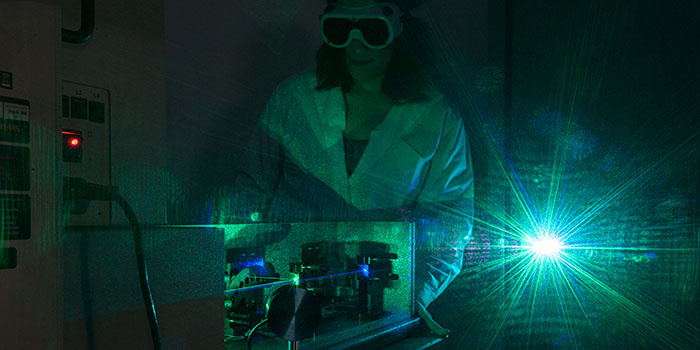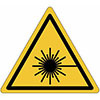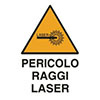Use of Optical Radiation sources

Optical radiation refers to any electromagnetic radiation in the wavelength range between 100 nm and 1 mm; optical radiation is sub-divided into ultraviolet, visible and infrared radiation. For protection purposes, these are further divided into:
- Ultraviolet radiation: optical radiation in the wavelength range between 100 and 400 nm. Ultraviolet radiation is divided into UVA (315-400 nm), UVB (280-315 nm) and UVC (100-280 nm);
- Visible radiation: optical radiation in the wavelength range between 380 and 780 nm;
- Infrared radiation: optical radiation in the wavelength range between 780 nm and 1 mm. Infrared radiation is divided into IRA (780-1400 nm), IRB (1400-3000 nm) and IRC (3000 nm -1 mm).
Optical radiation can be classified as coherentand non-coherent; the former is in-phase and is generated by lasers, the latter is out-of-phase and is generated by other non-laser sources (artificial optical radiation) and by the Sun (natural optical radiation).
NON-COHERENT OPTICAL RADIATION

The eyes and the skin are the target organs for effects of optical radiation.
At wavelengths shorter than 600 nm this type of radiation triggers photochemical effects in human tissue. At wavelengths longer than 600 nm it mainly causes photothermal effects.
When identifying possible sources of non-coherent optical radiation, the first step is to establish whether or not the source in question is a ‘Trivial source’, meaning a source in respect of which exposure levels do not have to be measured since it is clear, right from the start, that the exposure limit values are not exceeded owing to the technical measures or work procedures in place.
‘Trivial’ sources include:
- display screen equipment, photocopiers, whiteboard presentation equipment, desktop projectors (safe if the beam is not looked into), safety signs and lamps;
- equipment classified into category 0 according to UNI EN 12198/09;
- lamps classified as ‘exempt’ according to CEI EN 62471/09.
COHERENT OPTICAL RADIATION: LASER RADIATION
|
|
|
In accordance with CEI EN 60825-1, manufacturers must classify laser devices according to the hazard they represent (with class 1 representing the lowest risk level and class 4 the highest).
Furthermore, pursuant to CEI 76 “Guidance on the use of laser devices for research laboratories” for installations where lasers in a risk category higher than class 3A are used, the user must consult a laser safety adviser (in Italian, TSL). At PoliTO the laser safety adviser operates under the Health and Safety Services Unit and works with the latter to inspect and assess laser devices and train laser operators. The laser safety adviser also defines the appropriate PPE in accordance with the specifications of UNI EN 207 and 208. The eyes and the skin are the target organs for effects of coherent optical radiation.
| Wavelength (nm) |
|
Eyes |
Skin |
| 100-280 |
UVC |
Photokeratitis, Photoconjunctivitis |
Erythema, Skin cancer |
| 280-315 |
UVB |
Photokeratitis, Photoconjunctivitis, Cataracts |
Erythema, Elastosis (photoageing), Skin cancer |
| 315-400 |
UVA |
Photokeratitis, Photoconjunctivitis, Cataracts, Photoretinal damage |
Erythema, Elastosis (photoageing), Immediate pigment darkening, Skin cancer |
| 380-780 |
Visible |
Photoretinal damage, Retinal burn |
Burn |
| 780-1400 |
IRA |
Cataracts, Retinal burn |
Burn |
| 1400-3000 |
IRB |
Cataracts |
Burn |
| 3000-106 |
IRC |
Corneal burn |
Burn |


